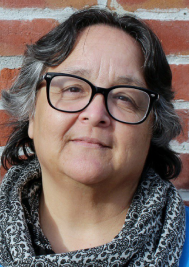
Aging with Diabetes: Unexpected Opportunities
July 20, 2023 | By Corinna Cornejo
Something amazing is happening. Overall life expectancy is growing longer — even for people with diabetes. We’ve gone from assuming that a diabetes diagnosis means that you won’t get past 40 to people being recognized for reaching their 40th, 50th, and even 60th diagnosis anniversary. [1] [2] [3]
Dramatic advances in medicine and technology have played a big role in getting us here.
Healthcare practices now include more accurate monitoring and measuring of our state of health. Technology exists that allows us to track our glucose levels practically to the minute and use computing power to continually dose just the right amount of insulin. New diabetes drugs help the body efficiently eliminate excess glucose from the bloodstream.
At least for some of us.
Gaps remain in accessibility and affordability.
We’ve also seen diabetes care improve by applying the things we already knew. Campaigns aimed at letting people know that overall healthful nutrition, exercise, sleep, and mental habits, along with medication, improve diabetic health. Many of these are things we can do on our own or with minimal help from a healthcare professional.
Taken together, all these developments open up the possibility of longer lives and better quality of life for more people with diabetes in more places across the globe. Consequently we’re faced with having to consider something nearly unthinkable a generation ago: aging with diabetes.
Where do we start?
The opportunities that come with aging
The WHO, in response to the UN declaring this the Decade of Healthy Ageing (2021-30), declared that longer life brings with it opportunities for new activity and contributions to family and society. [4]
This statement stopped me in my tracks when I first read it. I had to rethink my assumptions about aging, and aging with diabetes.
The WHO, in this statement, didn’t reinforce the common trope that says old age and diabetes automatically lead to complications, comorbidities, and infirmity. We can look ahead to a long, life filled with vitality, meaning and pleasure.
However, the WHO’s statement went on to point out, being able to make these contributions depends heavily on health. (Emphasis mine.)
“Additional years provide the chance to pursue new activities… Older people also contribute in many ways to their families and communities. Yet the extent of these opportunities and contributions depends heavily on one factor: health.”
— WHO, Ageing and health
In other words, how we take care of ourselves on the way to old age counts. Not just managing our diabetes has an impact, but also how we think about aging is also important.
Seeing ourselves as active, engaged, and productive throughout life serves as an incentive for keeping at the daily work of actively managing our health. The thought that infirmity is not inevitable as we age further encourages us to stay active, connected, and engaged. All prerequisites to staying spry and spritely.
Such empowering ideas.
The societal challenges that come with aging
Even so, we cannot take on aging with diabetes all on our own. Life doesn’t happen in a vacuum. Life requires connections. Some of these connections put and keep life preserving healthcare within reach. Other connections put us in roles where we can stay socially engaged and continue making tangible contributions throughout all stages of life. Still other connections foster joy and fellowship. Connection to friends, family, community, society — all are important for the quality of the life we live.
By shifting how we think about and approach our own aging with diabetes we disrupt entrenched assumptions about aging. Frailty and disability are no longer inevitable. Our ability to contribute to our communities doesn’t have to end with our working life. We can stay vital and active for many years to come.
“No man is an island, entire of itself; every man is a piece of the continent, a part of the main.”
— John Donne
With longer, more healthful lives we have an opportunity to rewrite our own scripts for old age. Deciding where we focus our energy and efforts. Defining the roles we play among our friends and families. Determining the impact we want to ultimately have on our communities.
Look closely and you can see that these disruptions are already happening.
Technology has made diabetes treatments more effective and more widely available. Governments are grappling with the economic and social impact of aging populations and how to keep people healthy. Communities are puzzling out how to accomodate the shifting needs of their members.
However the most important players in making all these changes happen is us! The people actually living with diabetes. We are the only ones who can answer the many questions that come up when thinking about how to manage aging with diabetes.
How do we want to approach aging with diabetes? Where do we see ourselves at 60, 70, 80, or even 90 years old? Who will be around us? What will we be doing on an average day? And, most importantly, what are we willing to do today to make our ideal tomorrow possible?
We, the ones most directly affected, are in the best position to influence and inform the changes needed to keep us healthy and vital. Whether it be talking with our healthcare providers or city planners, we can help them understand what we need to stay engaged and active.
Addressing these questions won’t be easy. There won’t be a one-size-fits-all solution. Redefining aging with diabetes for today’s world is going to take some dedication and work.
I, for one, am up for the challenge. Are you?
- Corinna Cornejo
Diagnosed with type 2 diabetes a decade ago, Corinna Cornejo is a patient advocate and blogger who focuses is on health policy and developments in digital healthcare without losing sight of their potential impact on real people's lives. Corinna blogs at https://type2musings.com/ and can be found on Twitter and Facebook as @Type2Musings.
The opinions presented in this blog post are those of the author and may not represent the opinions of Ascensia Diabetes Care. Ascensia have paid Corinna Cornejo an honorarium for her services as a contributor to this blog.
—-----------
SOURCES
[1] Richter F. Global life expectancy is changing around the world. World Economic Forum. Published February 23, 2023. https://www.weforum.org/agenda/2023/02/charted-how-life-expectancy-is-changing-around-the-world/
[2] Joslin Diabetes Center, Inc. Medalist Program & Study. Joslin Diabetes Center. Accessed April 17, 2023. https://www.joslin.org/research/our-research/medalist-program-study#
[3] Kianmehr H, Zhang P, Luo J, et al. Potential Gains in Life Expectancy Associated With Achieving Treatment Goals in US Adults With Type 2 Diabetes. JAMA Network Open. 2022;5(4):e227705. doi:https://doi.org/10.1001/jamanetworkopen.2022.7705
[4] World Health Organization. Ageing and health. World Health Organization. Published October 1, 2022. https://www.who.int/news-room/fact-sheets/detail/ageing-and-health



